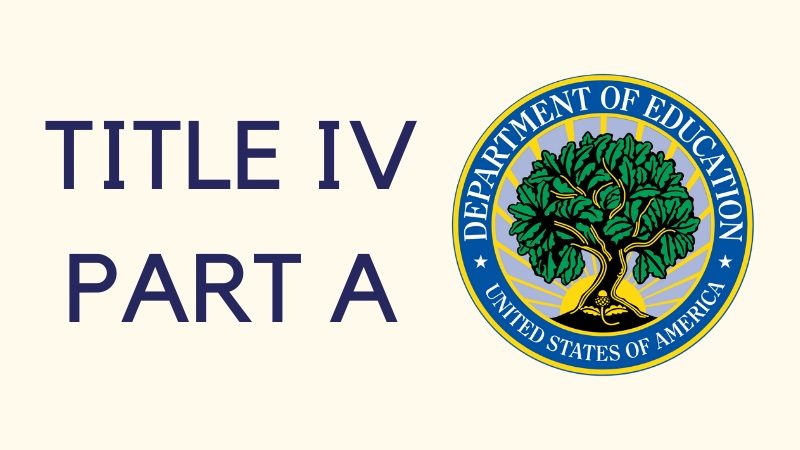WHAT IS TITLE IV FUNDING
Title IV, Part A (or Title IV-A) is a federally supported grant program that supports K-12 education. It is part of the Every Student Succeeds Act (ESSA), signed into law in 2015. Under this law, the Elementary and Secondary Education Act of 1965 (ESEA) was reauthorized and newly added under Title IV-A of the ESEA is the Student Support and Academic Enrichment (SSAE) program.
STUDENT SUPPORT AND ACADEMIC ENRICHMENT PROGRAM
The SSAE program is intended to improve students’ academic achievements by increasing the capacity of state educational agencies (SEAs), local educational agencies (LEAs), and local communities to provide all students with access to an education that is well-rounded, safe, and technologically efficient. Congress allocates money to the SSAE program, and we refer to this as Title IV-A funding. States receive an allocation of Title IV-A funds from Congress that is then distributed to school districts. Districts distribute money to schools for a variety of programs, materials, or other necessities that fall under three broad categories.
TITLE IV-A FUNDING FOR SCHOOLS MAY SUPPORT THE FOLLOWING AREAS:
① Provide students with access to a well-rounded education
Examples: STEM, music, art, health education, physical education, computer science, social emotional learning, dropout prevention
② Improve school and learning conditions to help students be safe and healthy
Examples: mental health services, violence prevention, counseling, trauma-informed practice, school climate and safety initiatives, integrated supports for students and families
③ Support the effective use of technology in the classroom
Examples: instructional support, specialized professional development, blended and personalized learning, securing open and free resources, infrastructure and digital devices
WHAT DOES THIS MEAN FOR MUSIC EDUCATION?
According to ESSA, music is listed as part of a well-rounded education, therefore, Title IV-A funds for schools can be requested and spent to provide supplemental support for music education programs in schools! In order to access Title IV-A grant funding, music educators or school leaders need to a) understand how the Title IV-A program works and how much funding is available to their school district; b) participate in obtaining the funds with the school district; and c) understand the music education needs for the district, including opportunities to increase access to music programs for students. Check out the resources below for more information.
WHAT CAN YOU DO TO ADVOCATE FOR TITLE IV-A FUNDING?
CONTACT YOUR TITLE IV-A STATE COORDINATOR
What should I ask my Title IV Coordinator?
✓ How much money is my school district getting from Title IV-A next school year?
✓ How is my school district allocating Title IV-A funding to its schools?
✓ How can my school be proactive and receive Title IV-A grants for our music program?
✓ Are there additional Title IV program resources or connections I can make to increase my likeliness of receiving funding?
WORK WITH TEACHERS, PARENTS, AND COMMUNITY MEMBERS TO CONDUCT A NEEDS ASSESSMENT.
Do I really have to do a needs assessment?
✓ Any school district that receives an allocation about $30,000 in Title IV-A funds must conduct a needs assessment.
✓ You probably already have an assessment completed, answering questions like: Do all the students in your school go to a music class every week? Do the music students have the materials and resources they need, i.e. curriculum, instruments, etc.?
✓ Remember: Keep it simple, you can do it!
ASK FOR SUPPORT FROM YOUR school ADMINISTRATORS AND DISTRICT OFFICE
Gather a group of people that will help you submit a proposal for Title IV-A funding for your music classroom. What to do to get started:
✓ First, hold a meeting with your principal and/or superintendent and ask who in the district is responsible for accessing federal grant programs, including Title IV-A.
✓ Your proposal should speak to how the music program at your school is succeeding and how it could benefit from additional funding. Focus on music as part of a well-rounded education for every student.
✓ Listen to what your students say about the importance of music in their school day. Collect artifacts like student work, letters of appreciation for music class, videos of student performances, and put together a portfolio to support your advocacy.

